
The Church and Death and Dying
Anointing the Sick
One of the greatest benefits of the Anointing of the Sick is the forgiveness of all sins, venial and mortal, and pardon for all the punishment still owed for having sinned. In other words, it prepares us for immediate entry into heaven. Normally, if time and the condition of the sick person permits it, sins would be confessed and forgiven in the Sacrament of Reconciliation. But if circumstances do not make this possible for the sick person then we have the consolation of knowing that the Anointing of the Sick will forgive all one's sins and the remnants of sin.
The Anointing of the Sick is meant to be received at the beginning of an illness, and Viaticum, Holy Communion before dying, is received at the end of a final illness. Christ first prepares us by a cleansing as powerful as Baptism by means of the Anointing of the Sick. Then He comes to us in the Eucharist before dying so that he may strengthen us and be with us on our final journey through death.
But many sick people are unable to take any food in the last days of their final sickness. Now, to make it possible for us to have the Eucharist during serious illness and before the approach of death, the Church allows the sick to receive the Eucharist under the form of wine alone, even outside the time of Mass. This means that Priests have to reserve the Precious Blood in the Tabernacle. Most of the dying are able to take a few drops of water, and so could also receive a few drops of wine. Since this is now permitted we may begin requesting it for others if they desire it, and someday for ourselves.
The Anointing of the Sick may be received not only at the beginning of a serious illness, but also before serious surgery, and by the elderly, and by children able to appreciate and be strengthened by this Sacrament, and by those who have a serious mental illness. It may be repeated at new progressive stages of illness or when the elderly become notably weaker.
In addition to the graces of the Anointing of the Sick, we may also receive an indulgence for the moment of death called the Apostolic Pardon. This does not of itself forgive sin the way the Sacrament does, but it removes all debt of punishment due to sins that may have happened since the last time the Sacraments were received. A Priest gives this indulgence following Viaticum if he is present. If no priest is available the indulgence can be received for the moment of death simply by the long-standing expressed desire of the sick person to benefit by this grace of pardon.
Sacraments of Desire
The Anointing of the Sick can be received by the desire for it; but that without the desire, or purpose, of receiving this sacrament, even the visible sacrament will not be received. In other words, the desire is so important that when the sacrament cannot be received visibly because of circumstances preventing this, it will be received interiorly because of the desire for it; and vice versa, if one does not want to receive the sacrament, or doesn't intend to receive because of disbelief or some other cause, then even going through the visible reception will not be effective.
When St. Thomas teaches that the Anointing of the Sick removes the remnant of sin, he means any punishment that might remain to be suffered for having sinned; and when he says the sacrament also removes the guilt of sin if it find it, he means that if there are any unforgiven sins then this sacrament will forgive them. However it is still necessary that the person desires to have these sins forgiven. Normally, the sacrament of Reconciliation would be received before the Anointing of the Sick when there is danger of death; but if circumstances prevent this, then the Anointing of the Sick will effectively remove all sins, mortal and venial, for which the person is sorry and desires forgiveness.
The desire for the sacrament is the beginning of its reception which normally culminates in the actual reception of the visible form of the sacrament. When circumstances prevent it from being received in the visible form, then it is received interiorly in virtue of the desire for it. This should be a great consolation for us to know that we can receive the sacrament of the Anointing of the Sick by desire when we are prevented from receiving it in the exterior visible form.
It should not surprise us that the Anointing of the Sick can be received by desire especially when we remember that forgiveness of sins is possible through an interior act of perfect contrition, and that the remnants of sin and punishment still owed, can be removed by desire for the plenary indulgence to be received at the moment of death. Anointing of the Sick has as its principal effect the remission of all sin and the punishment still owed for having sinned. It is a great mercy of God that he wills to make it possible to receive the sacrament of Anointing of the Sick when no priest is available to do the anointing.
The Anointing of the Sick can be received by the desire for it; but that without the desire, or purpose, of receiving this sacrament, even the visible sacrament will not be received. In other words, the desire is so important that when the sacrament cannot be received visibly because of circumstances preventing this, it will be received interiorly because of the desire for it; and vice versa, if one does not want to receive the sacrament, or doesn't intend to receive because of disbelief or some other cause, then even going through the visible reception will not be effective.
When St. Thomas teaches that the Anointing of the Sick removes the remnant of sin, he means any punishment that might remain to be suffered for having sinned; and when he says the sacrament also removes the guilt of sin if it find it, he means that if there are any unforgiven sins then this sacrament will forgive them. However it is still necessary that the person desires to have these sins forgiven. Normally, the sacrament of Reconciliation would be received before the Anointing of the Sick when there is danger of death; but if circumstances prevent this, then the Anointing of the Sick will effectively remove all sins, mortal and venial, for which the person is sorry and desires forgiveness.
The desire for the sacrament is the beginning of its reception which normally culminates in the actual reception of the visible form of the sacrament. When circumstances prevent it from being received in the visible form, then it is received interiorly in virtue of the desire for it. This should be a great consolation for us to know that we can receive the sacrament of the Anointing of the Sick by desire when we are prevented from receiving it in the exterior visible form.
It should not surprise us that the Anointing of the Sick can be received by desire especially when we remember that forgiveness of sins is possible through an interior act of perfect contrition, and that the remnants of sin and punishment still owed, can be removed by desire for the plenary indulgence to be received at the moment of death. Anointing of the Sick has as its principal effect the remission of all sin and the punishment still owed for having sinned. It is a great mercy of God that he wills to make it possible to receive the sacrament of Anointing of the Sick when no priest is available to do the anointing.
Order of Christian Funeral
The Vigil
The Order of Christian Funeral notes that "the vigil for the deceased is the principal rite celebrated by the Christian community in the time following death and before the funeral liturgy.... At the vigil the Christian community keeps watch with the family in prayer to the God of mercy and finds strength in Christ's presence.... The assembly at the vigil calls upon the Father of mercy to receive the deceased into the kingdom of light and peace."
The structure of the Vigil is: introductory rite, liturgy of the word, prayer of intercession and concluding rite. An opening song has been added to the rite and the singing of at least the refrain of the responsorial psalm is strongly recommended. As the Order of Christian Funeral notes" "Music is integral to any Vigil, especially the Vigil for the deceased. In the difficult circumstances following death, well chosen music can touch the mourners and others present at levels of human need that words alone fail to reach."
The Vigil rite also allows for the family to "personalize" this ceremony. Immediately after the concluding prayer and before the concluding rite, the ritual notes "A member or a friend of the family may speak in remembrance of the deceased." Oftentimes the deceased had a favorite poem or song, or the family wishes to bring into the funeral rites a rosary, picture, some hand-crafted article made by the deceased or some other symbol representing the deceased and his/her life. This is the appropriate time and place for these "personal touches" to be presented and shared with the community. The revised rite makes provision for such remembrances at this time rather than at the Preparation of Gifts during the Eucharist at which time only the gifts to be offered in the Eucharist (the bread and wine) are to be presented.
Families, parish bereavement staff, and pastor are encouraged to plan together the funeral rites so that they may be an effective source of consolation and hope.
The Funeral Liturgy
The funeral liturgy is the central liturgical celebration of the Christian community for the deceased.... At the funeral liturgy the community gathers with the family and friends of the deceased to give praise and thanks to God for Christ's victory over sin and death, to commend the deceased to God's tender mercy and compassion, and to seek strength in the proclamation of the paschal mystery.
Two forms for the funeral liturgy are given in the Order of Christian Funeral: "Funeral Mass" and "Funeral Liturgy Outside Mass" (in those instances when Mass cannot be celebrated although the preference is for the traditional funeral mass).
Like the Vigil, the structure of the Funeral Liturgy is familiar: reception of the body, celebration of the liturgy of the word, celebration of the liturgy of the Eucharist, and the final commendation and farewell. Let's look at each briefly.
Reception of the Body
The rite begins with the reception of the body at the church. This may occur in conjunction with the funeral mass as the family and friends of the deceased bring the body from the funeral home or it may take place some time prior to the beginning of the mass in which case the mass begins with the greeting and penitential rite as at the Sunday liturgy, the rites associated with the reception of the body already having been celebrated.
This rite of reception is significant in that it visibly shows the gathering of Christ's body, the Church, to welcome into its midst one of its members who now has completed his/her journey of faith begun in baptism, nurtured by the Eucharist, strengthened by the other sacraments and now has been fully immersed into the likeness of Christ's death and resurrection. (Rom 6:3-9)
The body is sprinkled with holy water in remembrance of baptism. The family of the deceased then places the funeral pall over the casket in silence. Just as the deceased's family brought the person to the church for baptism and clothed them with their baptismal garment, so now the deceased's family again "clothes" them with the pall which signifies that garment as they enter eternal life.
The Order of Christian Funeral notes that any national flags or insignia of associations (Knights of Columbus, Foresters, etc.) which may have been on the casket prior to reception at the church are removed at the church entrance and may be replaced once the coffin has been taken from the church. A baptised Christian's baptismal identity as a member of the Body of Christ, the Church, supersedes any membership in a human organization.
Celebration of the Liturgy of the Word
The selection of scripture readings particularly from the New Testament and Gospels has been expanded over the years. Also expanded is the selection of opening prayers to cover a wider range of persons and circumstances. Again the church wishes to offer every possible assistance to its members who are confronting the loss of a loved one through death. Careful planning by the family, parish bereavement staff, and priest will allow the richness of this rite to be experienced by all present.
Celebration of the Liturgy of the Eucharist
In both the Liturgy of the Word and Liturgy of the Eucharist, the Order of Christian Funeral encourages a full use of song. At the minimum the acclamations of the Eucharistic prayer (Holy, Memorial Acclamation, Great Amen) should always be sung. In the Liturgy of the Word, the responsorial psalm (at least the refrain) and gospel acclamation should be sung. Only bread and wine are to be presented at the preparation of gifts.
The Final Commendation and Farewell
Good-byes are always moments of reflection. In this part of the funeral liturgy the gathered assembly bids farewell to one of its members and entrusts them to the care of God.
Preceding this rite, the Order of Christian Funeral does allow again for a "personalization" by a member or friend of the family to speak in remembrance of the deceased. This should not be a eulogy; it should be brief such as thanking all present for their presence and support to the family in these moments of grief.
Of special importance in this rite is the "Song of Farewell". The Order of Christian Funeral demands that this song be true to its nature, i.e. songs are to be sung. "The song of farewell...is the climax of the rite of final commendation. It should be sung to a melody simple enough for all to sing.
During the song of farewell the body of the deceased is honored with incense as a visible reminder that during its earthly life it was a temple of God and dwelling place of the Holy Spirit.
The Rite of Committal
The Order of Christian Funeral states that "the rite of committal, the conclusion of the funeral rites, is the final act of the community of faith in caring for the body of its deceased member. It may be celebrated at the grave, tomb, crematorium.... Whenever possible, the rite of committal is to be celebrated at the site of committal...rather than at a cemetery chapel."
Psychologically and emotionally this final act of separation is a most difficult time for the family and friends of the deceased. The full reality of death is experienced as the body of the deceased is returned to the earth from which it came and the family and friends must "let go" in the act of separating themselves from the deceased. In these difficult moments, the church, once again, offers its comfort and support. Viewed in the context of faith the grave is not a place of despair and hopelessness but, rather, united with Christ in his own death and burial, a place of rest and peace in which the body of the believer awaits the promised resurrection on the last day.
Structurally, this rite is very brief. It consists of an invitation to prayer, recitation of a scripture verse, prayer over the place of committal, the act of committal, intercessions, Lord's Prayer, concluding prayer, and prayer over the people and dismissal.
Order of Christian Funeral prefers the actual committal (the lowering of the body into the grave) to take place within the context of the rite with the family and friends present. Obviously this has been the practice of the church for centuries except for recent times in our own country.
Psychologists and grief counselors tell us that as difficult as it may be at the time to see the body of a loved one physically placed into the grave or tomb, such reality therapy" is an important first step on the road to acceptance of the fact of death and the taking up of life once again without the presence of the deceased. In witnessing the burial of our dead we are under no illusion as to what has become of them or where their body has gone. Like all the other elements of the Order of Christian Funeral, in these final moments the family and friends of the deceased do not stand alone, the church is there to offer its gift of presence and hope based on faith.
Related Rites and Prayers
Prayers After Death
The Order of Christian Funeral "provides a model for prayer that may be used when the minister first meets with the family following. The rite follows a common pattern of reading (from scripture), response, prayer, and blessing and may be adapted according to the circumstances." As the introduction further states if the initial pastoral visit can be important as the first tangible expression of the community's support for the mourners."
Gathering in the Presence of the Body
This rite provides a model of prayer that may be used when the family first gathers in the presence of the body, when the body is prepared for burial, or after it has been prepared. The family members, in assembling in the presence of the body, confront in the most immediate way the fact of their loss and the mystery of death.
This rite is structured as follows: sign of the cross, scripture verse, sprinkling with holy water, psalm, Lord's Prayer, concluding prayer, blessing. The first viewing of a deceased loved one is a moment of great emotion. Through this rite the church "seeks to be with the mourners in their need and to provide an atmosphere of sensitive concern and confident faith." The minister for this rite could be someone from the parish staff, the parish bereavement committee, the funeral director or a member of the deceased's family if so willing and able.
At the conclusion of this rite, the minister is directed to extend a gesture "for example, signing the forehead of the deceased with the sign of the cross." Family members and friends could also be encouraged to participate in this gesture or some similar gesture such as resting a hand on the folded hands of the deceased or on the deceased's shoulder. Such a gesture can be very healing for the mourners in that it allows them to "own" the death of the one they loved and offer them a concrete way of expressing their love.
Transfer of the Body to the Church or to the Place of Committal
The procession to the church is a rite of initial separation of the mourners from the deceased. Because the transfer of the body may be an occasion of great emotion for the mourners, the minister and other members of the community should make every effort to be present to support them. This rite is structured as follows: invitation, scripture verse, litany, Lord's Prayer, concluding prayer, invitation to procession, procession to the church or place of committal.
The final viewing and last "good-byes" before the casket is closed and the procession to the church or cemetery is a wrenching time emotionally, equaled perhaps only by the final leave-taking at the time of committal. Again at this time the church wishes to be supportively present to its members who are mourning the death of a loved one. The scripture, brief litany and prayers speak of Christian comfort and hope.
Like the "Rite of Gathering in the Presence of the Body," the minister of this rite may be someone from the parish staff or bereavement committee, the funeral director or a member of the deceased's family or another relative or friend if so willing and able.


























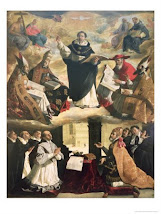
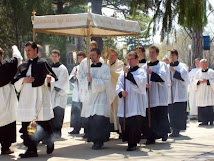

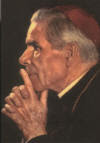

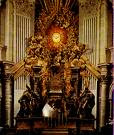
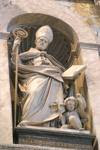



No comments:
Post a Comment